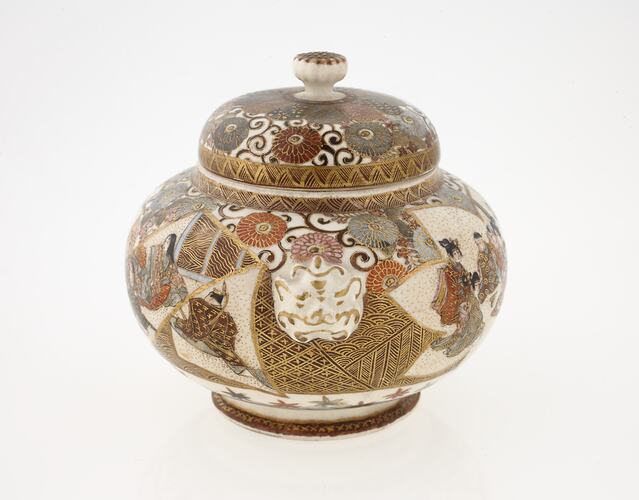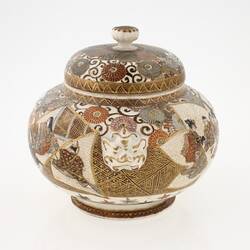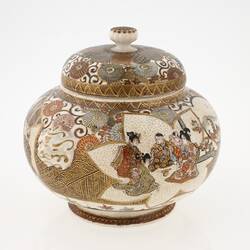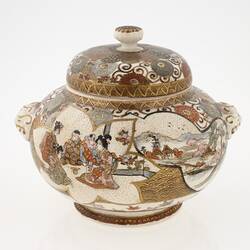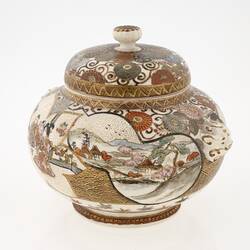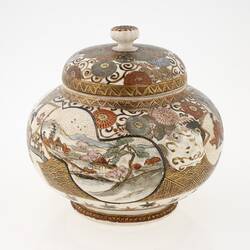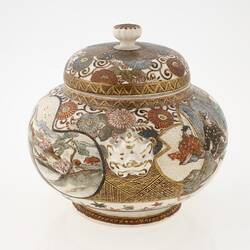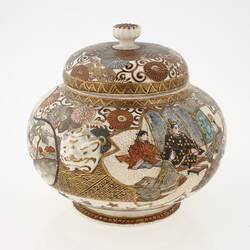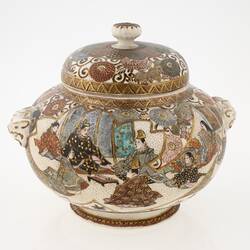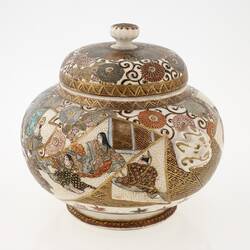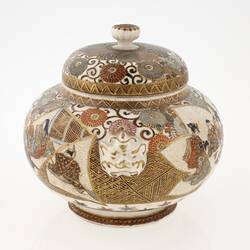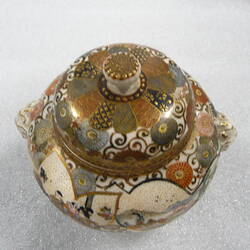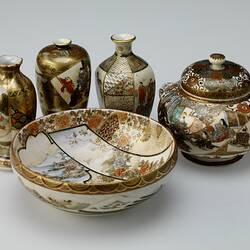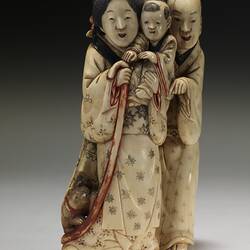Summary
Enamelled and gilded miniature Satsuma style covered bowl. Manufactured in Japan during the early Meiji period (1868-1880).
The style of painting on this vase is known as Kinran-de (gild on). The scenes depicted are those of entertainment and leisure for the upper classes of Japanese society during the Edo (1600-1867) period, and include landscape views of ocean, mountains and cherry blossoms. Kinran-de pottery, with designs of this kind, are rarely seen in Japan and were almost exclusively produced for export markets.
Satsuma ware is a type of Japanese ceramic pottery, also known as 'Satsuma porcelain'. The term can be used to cover a variety of ceramics, but is often used to describe a style identified by its rich gold and polychrome decoration. The technique developed during the sixteenth century, following the Japanese invasion of the Korean Peninsula, when Korean potters were brought back to Japan to establish a pottery industry.
Satsuma ware was introduced to a Western market following the exhibition of examples at the 1867 Paris International Exhibition, at the end of the Edo period, and very quickly gained an appeciation outside of Japan.
Physical Description
Squat, round bowl with two lion head finials on the body, and a lid with floral finial. The bowl and lid are enamelled in gold, red, blue and silver. The exterior of the bowl is separated into three panels, two on one side, and one on the other. The scenes show figures, ocean, mountains, cherry blossoms, and pines. The figures depicted are upper class Heian (794-1191) and Edo (1600-1867) people. The lid is decorated with a repeated pattern of abstracted flowers and leaves. There is an indistinct signature on the underside of the base, and a label affixed to the underside of the lid.
More Information
-
Collection Names
-
Collecting Areas
-
Acquisition Information
Donation from Dr Will Twycross, 16 Mar 2010
-
Place & Date Manufactured
-
Place & Date Exhibited
Royal Exhibition Building (REB), Nicholson Street, Carlton, Greater Melbourne, Victoria, Australia, 1880-1881
-
Collector
Mr John Twycross, Elsternwick, Greater Melbourne, Victoria, Australia, 1881
-
Inscriptions
Unidentified kanji signature in red on underside
-
Classification
Royal exhibition building, International exhibitions, Exhibition heritage
-
Category
-
Discipline
-
Type of item
-
Overall Dimensions
101 mm (Width), 95 mm (Depth), 85 mm (Height)
-
Keywords
Ceramics, Decorative Arts, Exhibitions: Melbourne International, 1880-1881, Japanese Art, Royal Exhibition Building
